September 12, 2013
The Feast of the Holy Name of the Virgin Mary
Pope Innocent XI extended this feast to the universal Church as a solemn thanksgiving for the relief of Vienna, when it was besieged by the Turks in 1683.
The Turks had formerly laid siege to Vienna, under Solyman the Magnificent, in 1529, in the reign of Charles V. But after losing sixty thousand men, and lying a month before the place, without making any considerable advances against it, they raised the siege.
Leopold I Habsburg, Holy Roman Emperor
The danger was much more formidable when those infidels made a second attempt upon this bulwark of Germany, in the reign of the Emperor Leopold. Great part of Hungary having taken up arms against that prince, the revolted cities were reduced to his obedience, and the ringleaders, the Counts Nadasti and Serini, with Christopher Frangipani, were beheaded in 1671. Count Serini had in view to make himself sovereign of Hungary, and his son-in-law, Prince Ragotzi of Transylvania. The flame of this rebellion was only covered, not extinguished, by these executions; it soon broke out again, and Emeric, count Tekeli, who had married Ragotzi’s daughter, at the head of thirty thousand good troops, carried all before him; and the better to stand his ground, invited the Turks into Hungary, Cara Mustapha being then Grand Vizier under Sultan Mahomet IV. The opportunity was embraced by the infidels; and on the 2nd of January, 1683, the fatal horse-tails, the usual ensigns of an ensuing war, were seen upon the gates of the seraglio at Adrianople, and the whole Ottoman empire was in motion, to carry fire and sword into the bosom of the German empire.
Kara Mustafa Pasha
The vizier with great expedition marched through Hungary at the head of a mighty army, meeting with no opposition till he came to Raab or Javarin, a small strong town in Lower Hungary, on his road towards Vienna. This place he despised, and leaving it behind him, in the month of July, came within sight of the capital of Austria. At the view of the fire kindled in the camp of the Tartars on both sides of the Danube, the emperor, in the utmost consternation, yielding to the earnest entreaties of his generals, quitted Vienna with his empress, who was six months gone with child, and retreated with the greatest precipitation, without carrying with him either furniture, money, or jewels.
The court narrowly escaped falling into the hands of the Tartars; the emperor retired first to Lintz, and finding himself not safe there, fled with equal precipitation to Passaw. In this flight the empress and her ladies were obliged to pass a whole night in a forest, where nothing but a truss of straw could be procured, and this not without difficulty, to lay Her Majesty upon. Tekeli joined the Turkish army with forty thousand men, and was master of Buda, and almost all Hungary.
Sipahis, Soldiers of the Sultan
The vizier with one hundred and fifty thousand Turks (besides Hungarians, Transylvanians, and Tartars) sat down before Vienna, and began to open the trenches on the 14th of July. His army took up an incredible tract of ground; his own quarter was upon the little rising hills which surround the palace: in it, a display of immense riches in gold and jewels made the most splendid show amidst all the terrors of war. The infidels burnt the suburbs, with the palace called the Favorite, and the houses of the nobility in the suburb of Leopoldstad. 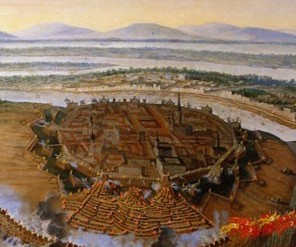
The fortifications of the city were at that time very weak in many places; the counterscarp was in a sad condition. The place where the attack was made, was flanked by two small bastions, and fortified by a ravelin which covered the curtain. The rampart lay close to the houses, and if the outworks and first posts had been carried, it would have been impossible for the city to have held out much longer. There was in it good store of provisions and ammunition, with skilful engineers to manage the artillery: the garrison was joined by a great number of citizens, who seemed resolved either to save their country or to perish in its ruins.
The count of Staremberg, the governor, supported the drooping spirits of those who seemed to despond, and by his courage, address, and indefatigable industry, held out till succor arrived. This, however, he could not have done, had not the vizier been slow in his attacks, probably for fear of taking the city by assault, that he might preserve the plunder. All his mines were countermined; not one of them succeeded; a battery of seventy pieces of cannon was not able, in six weeks’ time, to break down one single pan of the ravelin. The duke of Lorraine, the emperor’s general, came out of Hungary with thirty thousand men; but could not attempt to relieve the besieged. The elector of Saxony joined him with ten thousand men, and the emperor implored the succors of all the Christian princes. Pope Innocent XI and John Sobieski, king of Poland, had entered into a league the year before to support him against the common enemy. Vienna indeed is the key, not only of Germany, but also of Italy and Poland, and a great bulwark of Christendom.
King Jan III Sobieski saying farewell to his family before leaving to fight the Turks at Vienna.
Upon the first news of the siege, Sobieski put himself in readiness to march to the relief of the place. The name of the Poles was at that time terrible to the Turks. Sigismund III, the pious and zealous king of Poland, who lost the crown of Sweden for the sake of his religion, defeated in 1611, on the banks of the Niester, an army of two hundred and ninety-two thousand Turks, commanded by the young sultan Osman in person, having killed, in different engagements, sixty thousand of their men, and twenty-five thousand in one battle. John Sobieski, whilst he was grand-marshal of the crown under king Michael, vanquished the Turks near the strong city of Kaminieck, and in several other places on the frontiers of Poland, commanded by several famous Bashaws, and by Coproli himself, so famous for his magnanimity, and for his great victories over the Christians in other parts.
Emperor Sigismund III of Poland painted by Albrecht Dürer
Being for his great merit chosen king of Poland in 1673, he, the following year, with small armies, gave the Turks so great overthrows near Leopold, Choczim, and in other places, that the vizier Coproli represented to the sultan the necessity of granting him all the conditions he required, telling him that Poland was invincible so long as the arm and fortune of Sobieski fought for it. The emperor had refused to send him succors in these wars, into which Poland had chiefly been drawn by supporting the interest of the house of Austria against the infidels, and their allies in Transylvania. King John had also received from him several affronts. Yet, on this occasion, he thought of nothing but what he owed to an ally, to all Christendom, and to God himself; and, with all possible expedition, marched towards Austria at the head of twenty-four thousand chosen men. He joined the duke of Lorraine near Ollerbrun, crossed the Danube at Tala, led his army through the narrow passes which the enemy might easily have guarded, and seized upon the mountains near Vienna, and on the castle of Claremberg, which commands the whole country. The Christian army encamped, on the 11th of September, on the tops of these mountains, and rested that whole day, that they might be fitter for action. This interval was chiefly employed in exercises of devotion.
King Jan III Sobieski meets Emperor Leopold I. Painting by Artur Grottger
On the 12th, early in the morning, king John with the duke of Lorraine heard Mass in St. Leopold’s chapel, at which the king served himself, holding his arms stretched out in the form of a cross all the time, except when it was necessary to employ them in ministering to the priest. He received Holy Communion, and after Mass the blessing which the priest gave to him and to the whole army. Then rising from his knees he said aloud: “Let us now march to the enemy with an entire confidence in the protection of heaven, under the assured patronage of the Blessed Virgin.”
Altar of St. Leopold’s Chapel in St. Stephen’s Cathedral, Vienna.
The body of the army was commanded by the electors of Bavaria and Saxony, and prince Waldec; the right wing by the king of Poland, and the left by Charles duke of Lorraine. In this order they made a descent upon the Turks, whom they attacked on three sides, in the absence of Tekeli, whom the vizier had sent into Hungary. The different posts seized by the infidels were covered with inundations; but, notwithstanding this advantage, they were driven from them; and, by noon, Sobieski was master of all the higher ground, and prepared to fall upon the quarters of the grand vizier.
John Sobieski III, King of Poland before his army.
Mustapha, all this while, making a jest of the assault, was drinking coffee in his tent, with his two sons, and the Cham of Tartary. He contented himself with sending a body of troops to the engagement on the side of Claremberg, and declined giving any assistance to his horse, though attacked by the whole imperial army. Whilst his troops were driven from hill to hill, he kept about him one hundred and fifty thousand men to be, as it were, spectators of the combat, and waited in a state of insensibility, as if it had been to deliver into the hands of Sobieski the immense wealth he had brought with him from Turkey, and the plunder he had gathered in his march. A mistaken confidence blinded him, and concealed his danger from him; but as soon as he saw the standards of Sobieski so near him, he passed from one extreme of presumption to another of terror and consternation. His courage forsook him, and he had no strength left but to fly. With him the whole Turkish army fled in the utmost disorder.
The Germans first entered the camp, they being nearest to it. The king reached it by six in the evening, and before night there was not a Turk to be seen. The conquerors found immense riches. Sobieski wrote to his queen, that the grand vizier had made him his sole executor. The great standard that was found in the grand vizier’s tent, made of the hair of a sea horse, wrought with a needle, and embroidered with flowers and Arabic figures, the emperor caused afterwards to be hung up in the great church at Vienna. He sent to Rome, as a present to Pope Innocent XI, the standard of Mahomet, which was erected in the middle of the camp, near the grand vizier’s tent. It was of gold brocade upon a red ground, with a rim of silver and green, and a border ornamented with Arabic letters. The Turks left behind them all their artillery, consisting of one hundred and four-score pieces of heavy ordnance. This great victory is said to have cost the Christians no more than six hundred men.
Battle of Vienna (1683) by Józef Brandt
The grand vizier owed his ruin to his senseless confidence, by which he neglected to guard the passes of Claremberg, vigorously to press the siege, to behave with vigilance and address in the engagement, or to conquer Javarin before he attacked Vienna, which omission was a step contrary to all the known rules of the art of war. But this was a special effect of a merciful providence, which also inspired the Christians with wonderful courage and prudence, and protected the city from many imminent dangers, especially from the following fatal accident. The stately and rich church of the Scots in Vienna was consumed by fire, and the flames reached the arsenal in which the powder and ammunition were laid up. Had this magazine been blown up, a breach would have been made in the ramparts, and the city would have fallen prey to the furious enemy. But the flame stopped on a sudden of itself, and the citizens had time enough to remove the powder and ammunition. This happened on the feast of the Assumption of our Lady, whose patronage the faithful most earnestly implored in this time of distress, in imitation of St. Pius V, before the battle of Lepanto.
Sobieski, after his victory, upon his entrance into Vienna, went directly, and presented himself before the altar, to return thanks to God, and joined in the Te Deum that was sung, with his countenance fixed upon the ground, and with the most lively expressions of humility, gratitude, and devotion. In the streets, whilst the people were busied in proclaiming his praises, and looking upon him with astonishment, the king attributed the whole success of his arms to God. The emperor returned into his capital on the 14th day of the same month, and assisted at a second Te Deum; but, by his haughty behavior towards his deliverer, seemed to think it beneath him to acknowledge so great an obligation. However, he afterwards excused himself by a letter to the young prince, James Sobieski, who attended his father, saying, that the remembrance of his past dangers, and the sight of the prince to whom he owed his preservation, had made at once so great an impression upon him, as to render him in a manner insensible.
King John III Sobieski Sobieski sending Message of Victory to the Pope, after the Battle of Vienna painted by Jan Matejko
Sobieski had too much greatness of soul to take notice of vain ceremonials, or punctilios of courts, and with his Poles pursued the Ottoman army. He came up with them near Gran, at the fort and bridge of Barkham upon the Danube, but being overpowered by numbers was repulsed with some loss. The Turks thinking he had been slain in this engagement, took courage, and prepared themselves to destroy his whole army; but two days after, on the 11th of October, the king fell upon them with such courage, and in such good order, that they were entirely routed, and lost on that day twelve thousand men.
Sobieski wrested some places out of the hands of the infidels in Hungary, beat forty thousand Turks and Tartars near Filgrotin, and returned to Warsaw crowned with laurels. In 1686, he led a victorious army through Moldavia, and many other countries subject to the Turks, over whom he gained several advantages; and though Cantemir, the perfidious Hospodar, contrary to his treaty, sided with the infidels, the king was everywhere successful, and conducted his army safe home through deserts, rocks, woods, narrow lanes, and over part of the Krapack mountains, with so much skill and order, as to outdo the famous retreat of the ten thousand Greeks from Persia. Yet this great king was treated with ingratitude both by the emperor and his own subjects. He died of a dropsy in the year 1696, of his age seventy-two.
King Jan III Sobieski with a gorget of the Black Madonna of Częstochowa.
The victories of Sobieski over the Turks saved Christendom. The house of Austria have from that time gained great advantages over them by the bravery and conduct of several renowned generals, namely, Charles duke of Lorraine, Maximilian duke of Bavaria, prince Louis of Baden, and prince Eugene of Savoy. The Turks yielded to the emperor Leopold the greater part of Hungary by the peace of Carlowitz in 1698.
Rev. Alban Butler (1711–73). Volume IX: September.
The Lives of the Saints. 1866.
See also Abbé Des Fontaines, Mr. Savage, and F. Barre, Hist. d’Allemagne, t. 10, Vienna obsessa, etc.

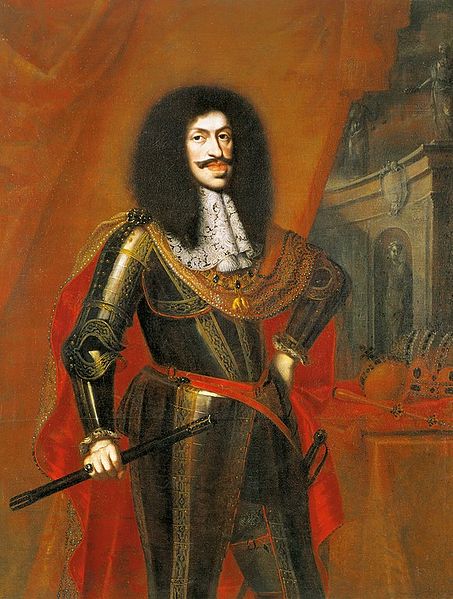


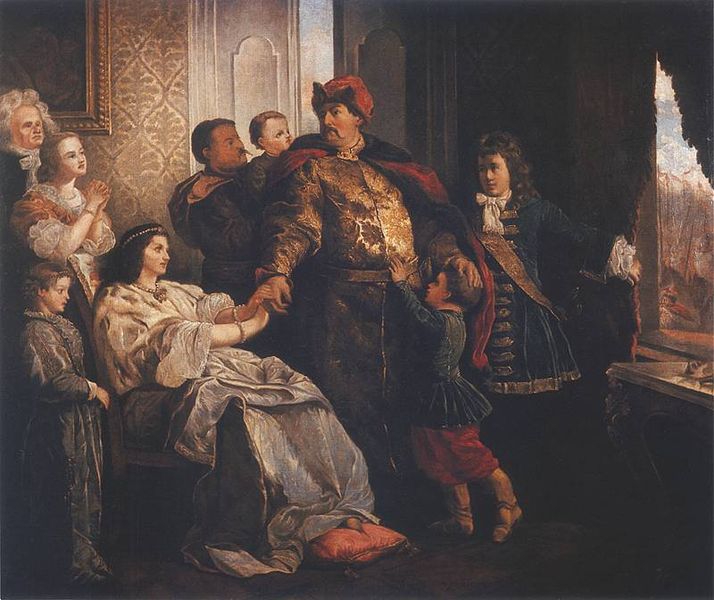
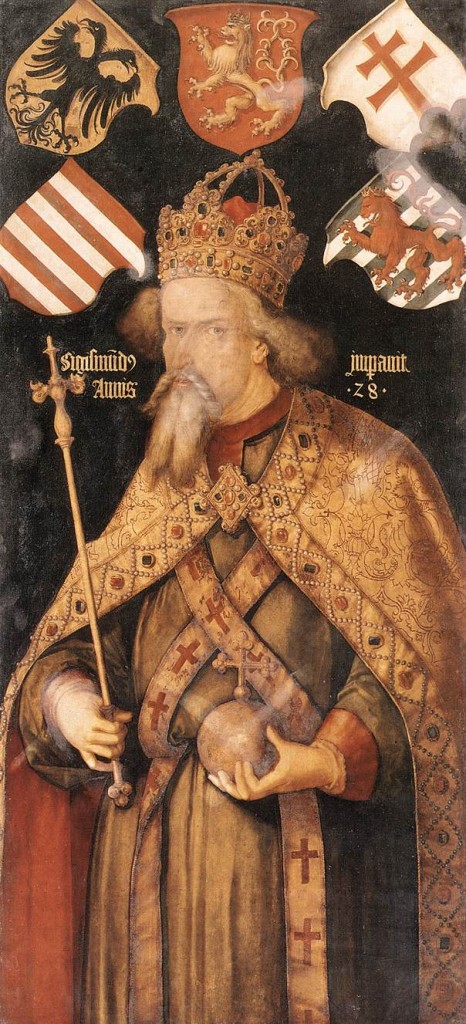
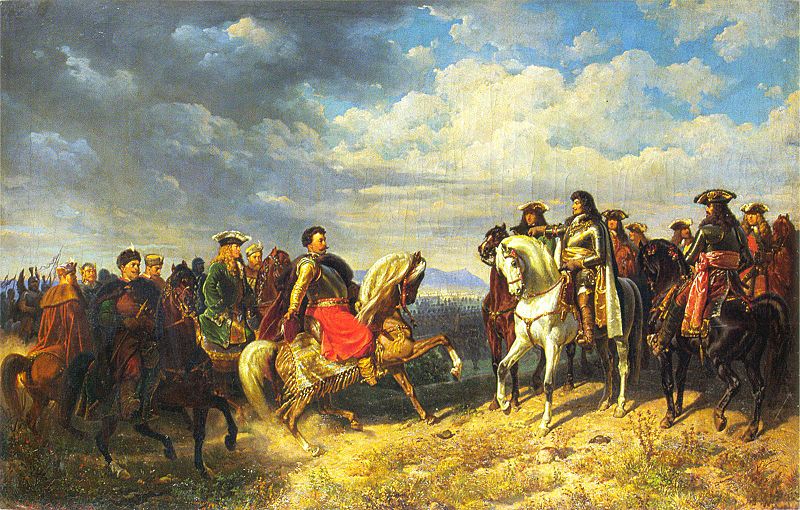
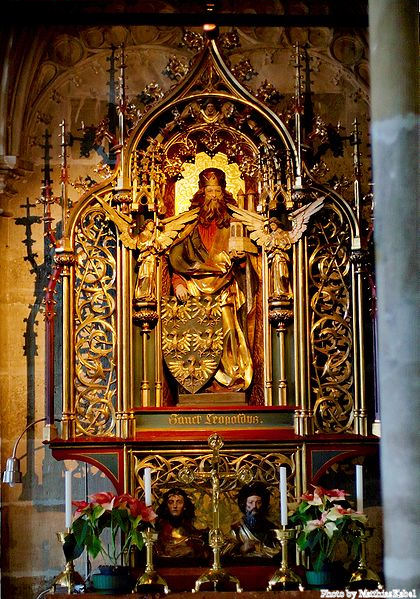
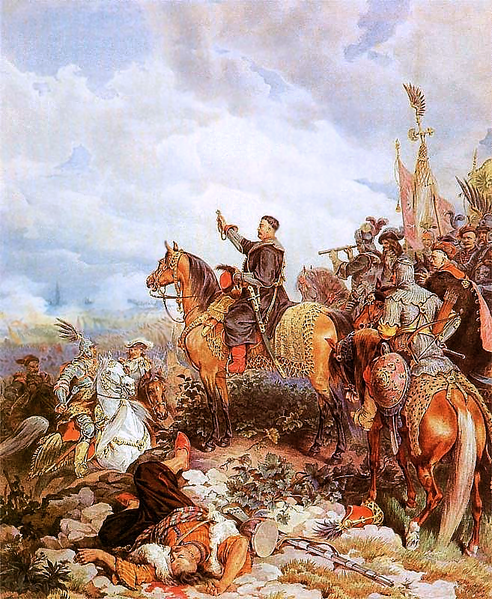
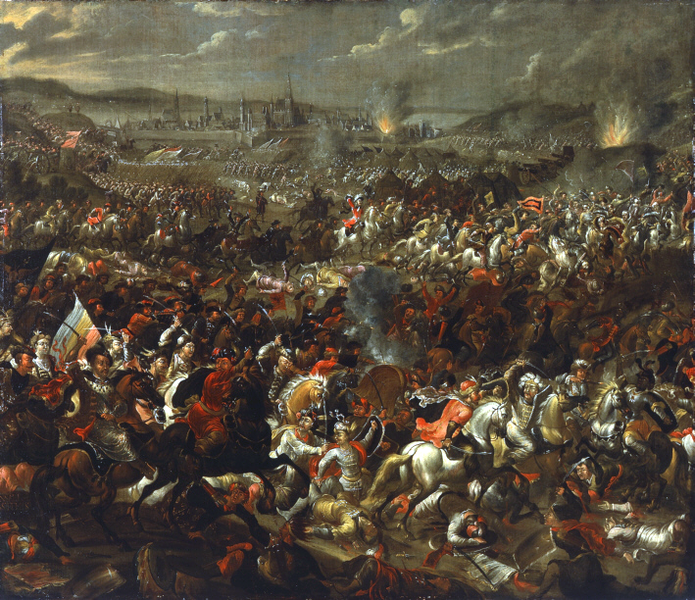
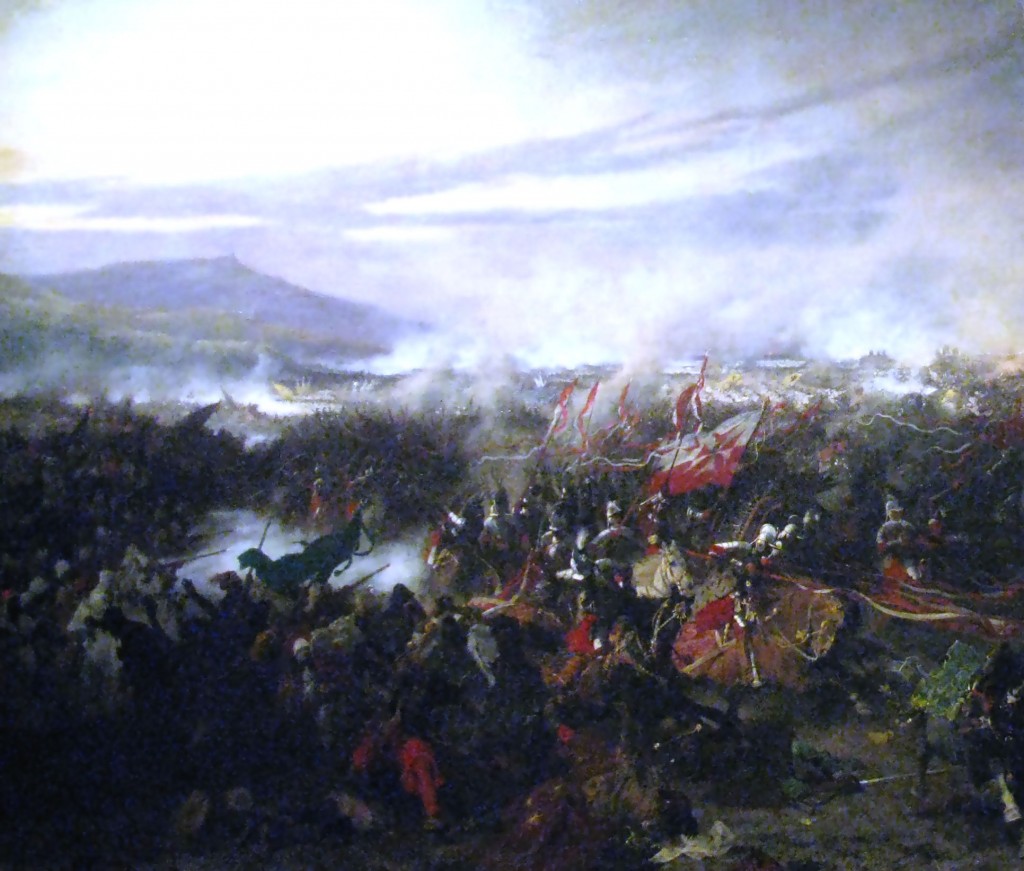
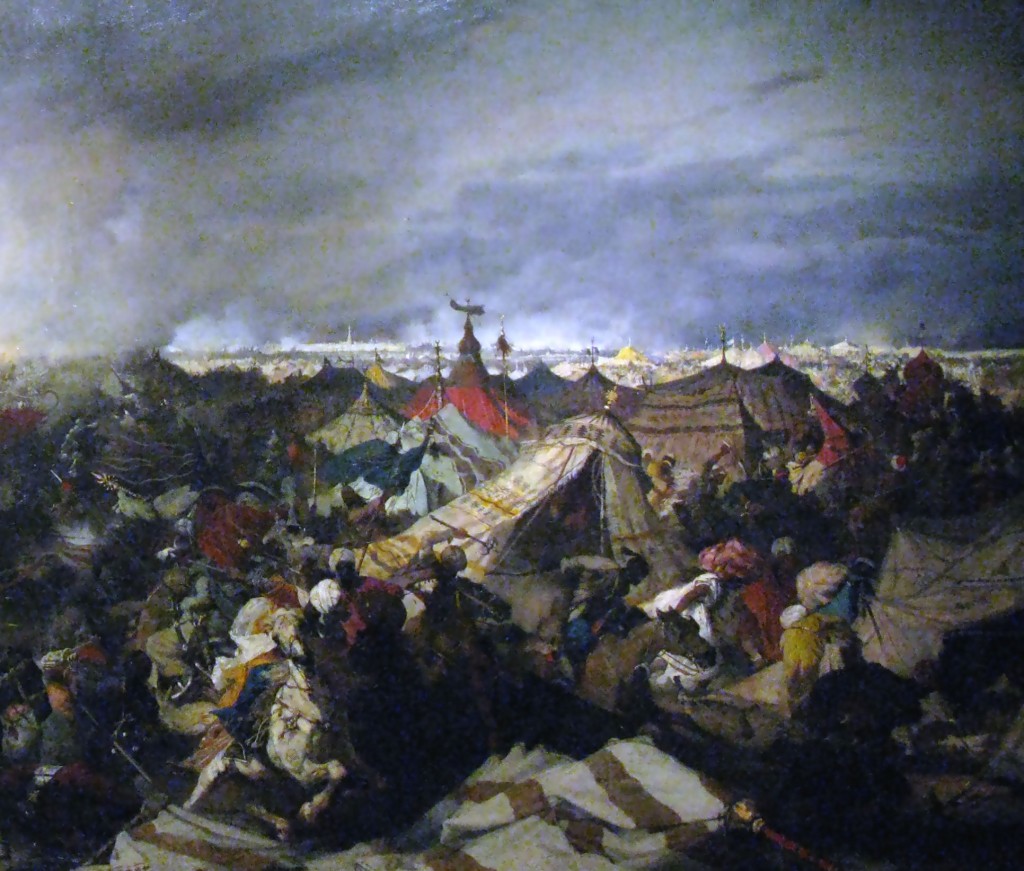


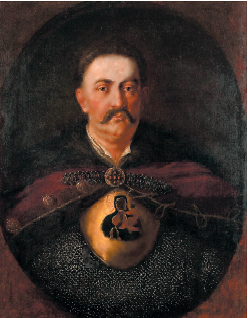
Should be required homily material every year on or soon after 9/11. Too obvious, since the feast date is 9/12. Have any of you heard this from a pulpit, even at daily mass ? I hope some of you have.
ReplyDelete